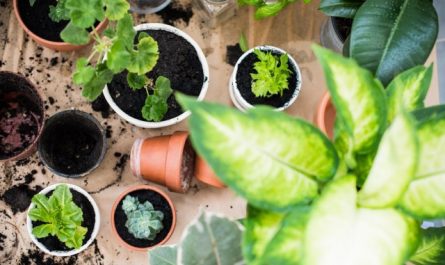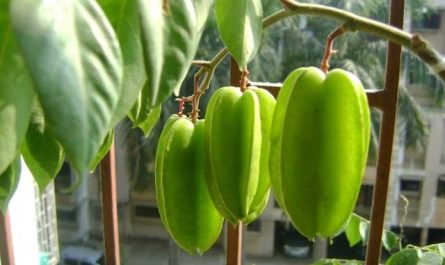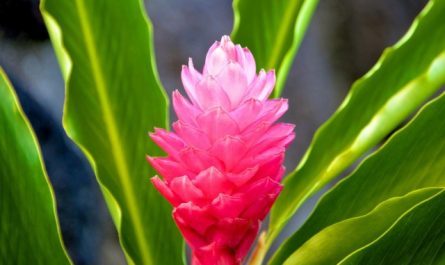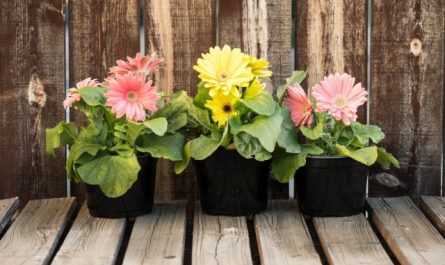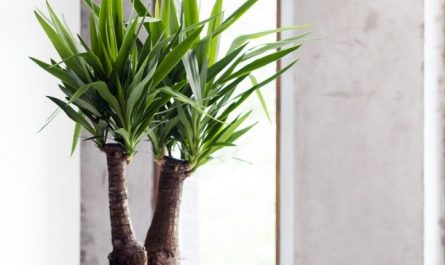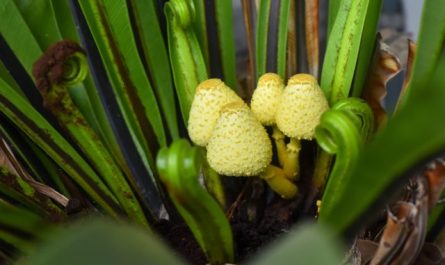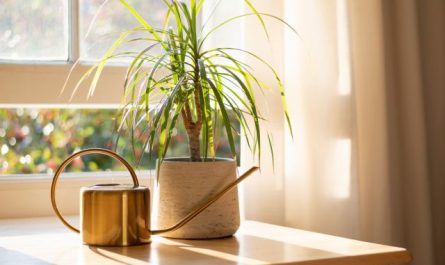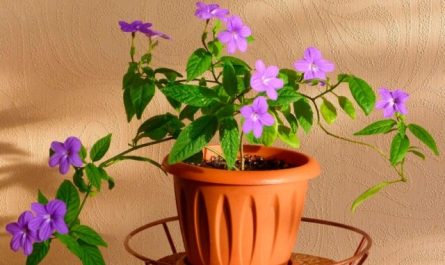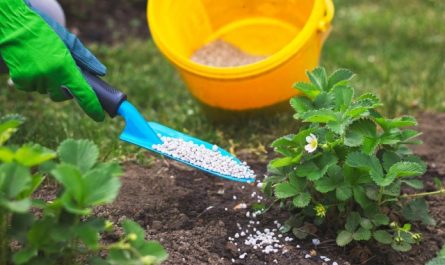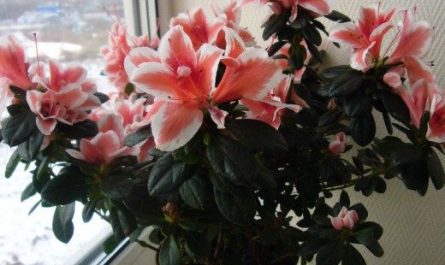Houseplants are more than just a means of creating a healthy atmosphere and greening the house. Regardless of whether the green favorites are large or small, whether they flaunt luxurious flowers or, on the contrary, conquer with outlandish patterns on leaves and texture, they are one of the most important tools for creating that very coziness that we all strive for. Even the most fashionable, extravagant and minimalist interior styles cannot do without them. And the place for houseplants is not only on windowsills. They have unique talents to perform the most amazing roles in the interior. And improving environmental friendliness, atmosphere, bringing harmony are just the most obvious of them.

Take a closer look at plants – they are capable of many things
Today, indoor plants are no longer considered simply as a green background, which belongs exclusively on a windowsill or on special stands in the corner. This is a unique decorative tool that allows you to play not only with the atmosphere in the room, but also with space, visual perception, control attention, attract attention, emphasize the functional purpose of zones and change the internal structure of the premises.
Indoor plants, by their very presence, are able to compensate for straight lines, combine incompatible design solutions, hide flaws, emphasize advantages, and bring harmony even where the basic principles of design are violated. And indoor plants are able to reveal these talents in the interior of any style. And in high-tech, minimalism, classics, oriental trends, baroque, nostalgic styles, modernism, fusion, loft or Provencal interiors, they play an equally important role. After all, landscaping of premises in many ways offers the same variety of options as the use of plants in landscape design.
Plants are individual and unique. And in terms of their use in the interior, each can boast both advantages and disadvantages. Some plants, such as ferns and ficuses, are ideal for the role of a neutral green background. Others, such as bellflowers, kalanchoe, begonias or calceolarias are bright color accents that play the role of a color spot.
Architectural and strict sansevieria, cheerful bulbous, strict conifers and palms, exquisite orchids, massive hibiscus and camellias, touching Saintpaulias and flexible ivy – all of them are capable of playing different roles in the design of the room. And to find the key to the ideal use of these plants in the interior, you must first of all take a closer look at them themselves. And try to discern the character and talent to change the space around them behind the beauty of the details. In fact, all that is needed to reveal the talents of plants is to look at them not only as a living decoration.

Modern interior design highlights 5 main functions, or roles, of indoor plants in the interior:
- Space division and zoning
- Functional definition, creation of a special atmosphere and emphasis on the purpose of individual zones
- Play with space
- Camouflage in all meanings
- Creating eye-catching points and the role of fresh bouquets

1. Zoning tool
Houseplants can be no less effective and efficient as a space divider, a means of zoning, than various screens, decorative screens, furniture, sculptures, shelves and other classic objects from among interior limiters. However, in this capacity, houseplants can act only in two cases:
- if we are talking about large, tall and massive plants that are perceived as an architectural element that sharply contrasts with the surroundings;
- if we are talking about using a group of plants that together create a massive ensemble, located on one or several levels, creating a kind of dividing line or living screen
In this case, from plants you can:
- create a full-fledged living screen or even a green wall using vines on screen-like supports;
- use them to create a vertical or horizontal strict “line” by lining them up in a row;
- exhibit them in the role of single “guards”, “living columns”, placing them at the entrance to the area, combining them with furniture and emphasizing with plants the beginning of an important area separated from the rest of the space;
- create a massive group of randomly placed pots, clearly separating one part of the room from another, etc.
Even one plant with an expressive silhouette, placed at the entrance to the zone directly on the floor or on a decorative stand, can play the same role as a large rack or shelf. Plants do not create a feeling of complete separation, but rather act as a symbolic divider, emphasizing the isolation, security and special atmosphere of individual zones, but without violating the unity of the room’s design as a whole. When using plants in zoning, it is very important to achieve a harmonious combination and ensure that there is no negative impact on the perception of space.
A limiting plant should not look like an alien object. If it seems too lonely, out of place, is not perceived as an important organic part of the interior, then it is better to complement it with either another indoor plant, or a sculpture or accessory that will help it fit into the environment. It is also worth playing with additional plants and if one plant or the chosen solution is not enough to fully separate one part of the room from another.
As a delimiter, separating element, you can use only highly decorative, spectacular, but at the same time unpretentious plants that tolerate poor lighting inside the interior. Most often, the role of dividers is performed by indoor plants from among decorative-leaved vines, palms, ferns and large tree crops.
Containers play no less a role than the plants themselves. They should precisely emphasize the style of the interior, harmonize with all the accessories and decorative items in the room, and be an organic part of the decor. You should not skimp on pots for plants involved in zoning. The most modest and standard options are inappropriate here.

2. Atmospheric wizards
If you want to create a special atmosphere in a certain area, to emphasize its role and importance, use all the talents of indoor plants not for division, but for creating a functional accent. Indoor plants have a unique talent for playing the role of an atmosphere-forming element. With the help of correctly selected plants and their placement, you can emphasize that certain areas in your home are intended only for relaxation and rest, and others – for concentrated work. Plants play the role of a green psychotherapist, an element that creates a special psychological background and a comfortable atmosphere, coziness and isolation.
Most often, atmospheric roles of plants are used in the living room. Groups of indoor plants are used here as a bright background for family communication, around upholstered furniture, a favorite sofa, places where the whole family gathers for active and not so active, but necessarily joint recreation. With the help of favorite green crops, a green oasis is created, as if separating the communication zone from the rest of the room, enclosing it in green “frames”.
You can create an atmosphere before communication with the help of large crops like citrus fruits, and with the help of a whole group of small indoor plants. Several plants on a table or desk, placed around or next to a sofa, will help to create a special atmosphere for communication and relaxation. Bright flowers and fruits, calm greenery balance each other.
Properly selected plants will help create the right atmosphere in other areas as well. Bright decorative peppers and citrus fruits, spicy herbs will emphasize the coziness in the kitchen. Calm, strict green crops, such as ivy and sansevieria, will become the perfect background for a study or a handicraft corner. Hardy and easy-to-care-for classic plants are appropriate in a child’s room. And in the bedroom, nostalgic and beautiful blooming roses, Saintpaulias and camellias will create a special romantic atmosphere.
As plants that play the role of functional accents, emphasizing the atmosphere of rest and relaxation, expressive crops are used, with calm green leaves, clean lines and bright flowers – crops that demonstrate green and cheerful colors in all their glory.
Decorative leafy stars with classic colors, but different leaf sizes, growth forms, combined into groups of 3 pieces, complemented by accessories and important memorable items, matching textiles and other decor – a classic option for a relaxation area. They are enlivened with several flowering plants. The main condition is that you like the plants, they should evoke positive emotions in you, one look at them should bring peace and tranquility.
You should have the impression that you are drowning in greenery, surrounded by nature, in a special corner intended only for you and your loved ones, protected from the rest of the world. And what plants you choose – ferns, ficus, birch, ground covers, spathiphyllum, fat plants or other hardy stars – depends on you and your personal taste. Preference should certainly be given to hardy plants that adapt well to different lighting conditions from among decorative foliage crops.
The properties of plants are enhanced by decor. For example, you can emphasize the atmosphere of a relaxation corner with pillows, selected napkins, family photos, placing a set of dishes or a vase with fruit, candles, lamps, and selecting bright and expressive pots that will emphasize the style of the interior. The decor is placed at some distance from the plants themselves, inside the zone. For work areas, choose strict accessories and laconic forms of pots, and for the kitchen – additional decor and various utensils used in a new way.

3. Impact on the environment and perception of rooms
Remember that both large and small indoor plants affect not only the atmosphere in the room and the mood that reigns in it, but also have a significant impact on the perception of space as a whole. Massiveness or, conversely, visual airiness, the nature of silhouettes and lines, the shape and size of foliage and inflorescences in indoor plants also cause certain optical illusions. Depending on the tasks at hand, an indoor plant can be used to visually expand the space or, conversely, to serve it, playing with the perception of the height and width of the room.
A massive, voluminous palm tree with large leaves has an overwhelming effect on the room and requires a very careful choice of placement as a solo accent. Ampelous plants with flexible shoots hanging in hanging pots give the impression of a green cloud floating in zero gravity, visually stretch the room and make the ceiling higher, give the space structure and expressiveness. But only if they are not placed in the foreground. Spathiphyllum bushes on the windowsill visually increase the feeling of free space, and fancy bromeliads, like almost all ficuses, suppress it.
Each plant, even the smallest one, depending on whether it creates a feeling of a soft background, a weightless and airy element or a massive, “dense”, large, bulky accent, affects the perception of the interior differently, but always. When placing even one plant, not to mention a group of indoor plants, you should evaluate their influence on the surrounding space both nearby and inside a separate zone and from a significant distance – the entrance to the room. Consider verticals and horizontals, mass and contours, light transmittance and showiness of plants.

4. Camouflage in small and large ways
In any design there are always places that can be conventionally called “visual voids”. Excessively large pieces of furniture, walls, surfaces of coffee tables, dining tables and side tables, cabinets, shelves, niches, wallpaper inserts, despite the beauty of the materials and models used, are often perceived as insufficiently interesting.
Such places, where the gaze has “nothing to catch on to,” are conventionally called voids. And it is easiest to fill them in the design of any room with the help of plants. And it does not matter whether we are talking more about horizontal or vertical surfaces. Such empty, lifeless corners, uninteresting places can be decorated with the help of green and blooming favorites.
If we are talking about a small place in your room that seems uninteresting, then it is better to place in it one single, spectacular flowering houseplant, a colorful accent that will harmonize with the color scheme of the interior. For large spaces and voids, it is better to use complex compositions in structure and height from several houseplants, to create entire still lifes with additional decor.
There is another similar problem that can be solved with the help of indoor plants – the need to disguise flaws or unattractive moments, to hide them from prying eyes. Plants are the best accents for distracting attention, a great means of camouflage. And for this, it is not necessary to install a trellis and allow vines to create entire green walls. Lush clumps of plants, small stands, hanging baskets formed on a support will easily cover up scuffs, chips, unsightly places, coating flaws or other unsightly details.
It is very easy to select plants for a camouflage role. They should look like living sculptures, and not just bright and flashy accents. In this case, you are limited only by the requirements of the plants for growing conditions, which should be similar. Otherwise, you can decide on the most unexpected combinations and experiments, just to achieve the most interesting options.
The main thing to remember is that in compositions that should distract attention from some elements of your interior, you need to play on contrasts. Combine tall and low, miniature and large plants, combine crops with large and small leaves, playing with textures, different shapes, silhouettes and character. Seasonal accent plants displayed in a row in identical containers, playing on horizontals and verticals, figured supports and strict crowns or elongated lines are always relevant.
The role of indoor plants as distracting elements can always be enhanced with additional decor. In the case of masking or filling, it is better if accessories and textiles present the seasonal features of the interior, emphasize the details. In masking, it is appropriate to use both large, exquisite accessories and small, so-called scattered decor, which draws attention to the plants themselves and enhances their “masking abilities”.

5. Luxurious Accents Worth Admiring
The exact opposite role of indoor plants to masking and distracting from shortcomings is to highlight the most advantageous elements of the design. In fact, indoor plants are the most beautiful and organic accents with which you can highlight the unique combination of textures, luxurious wallpaper, the most spectacular lamps, antiques, fashionable furniture, collections of accessories, family photos or heirlooms in the interior.
Regardless of which corner of the room you love, you can use indoor plants to draw attention to it and make it stand out from its surroundings. You can play with both coverings and smaller decor or accessories, from textiles to figurines.
And the interior element that you want to emphasize with the help of a houseplant should itself dictate the choice of a specific culture. A green favorite or a blooming star from among exotic or fashionable species that best reveal your tastes, attract admiring glances, present the interior and its style in a bright flowerpot, placed next to such a corner, will make the most advantageous places of the room the center of everyone’s attention.
The main thing is that it is clear at first glance: this is not a simple plant, but a real star. It is very important to consider not only their beauty, but also lines, shapes, and silhouette when using plants as eye-catchers. It should be elegant, expressive, and stand out from the surroundings, sharply contrasting with the environment. Cycas, orchids, and zamioculcas are rightfully considered the best accents today.
The main thing with decor and additional tools near the “attractive” beauties is not to overdo it. Use only expressive massive objects – newspaper racks, stacks of books, interior boxes, vases, which, without being more flashy than the plant itself, will attract attention to the object you are proud of.
Compact, small, elegant and neat indoor plants in beautiful flowerpots, bright baskets or additionally decorated pots are a great alternative to live bouquets. Such plants can be used to place colorful spots around the room instead of cut flowers in vases, and used in table decor, on coffee and tea tables, to decorate the bar counter, kitchen work surfaces.
Plants with exceptionally beautiful blooms or “filigree” details – a cushion of leaves, beautiful fruits, etc. – are always used as living bouquets. Bulbous flowers, hippeastrums, orchids, indoor roses and gerberas, bells, Kalanchoe, Nertera and other abundantly flowering crops look great in this capacity. They are necessarily selected in accordance with the interior style, season, using them as a color spot and a living luxurious bouquet.
Just remember that everything in such plants should be impeccable, even the soil mulched with decorative materials and the pot looking like a work of art. Plants in this quality are perfectly combined with additional pot decor, various dishes, kitchen utensils, baskets, other household items and serving textiles.



